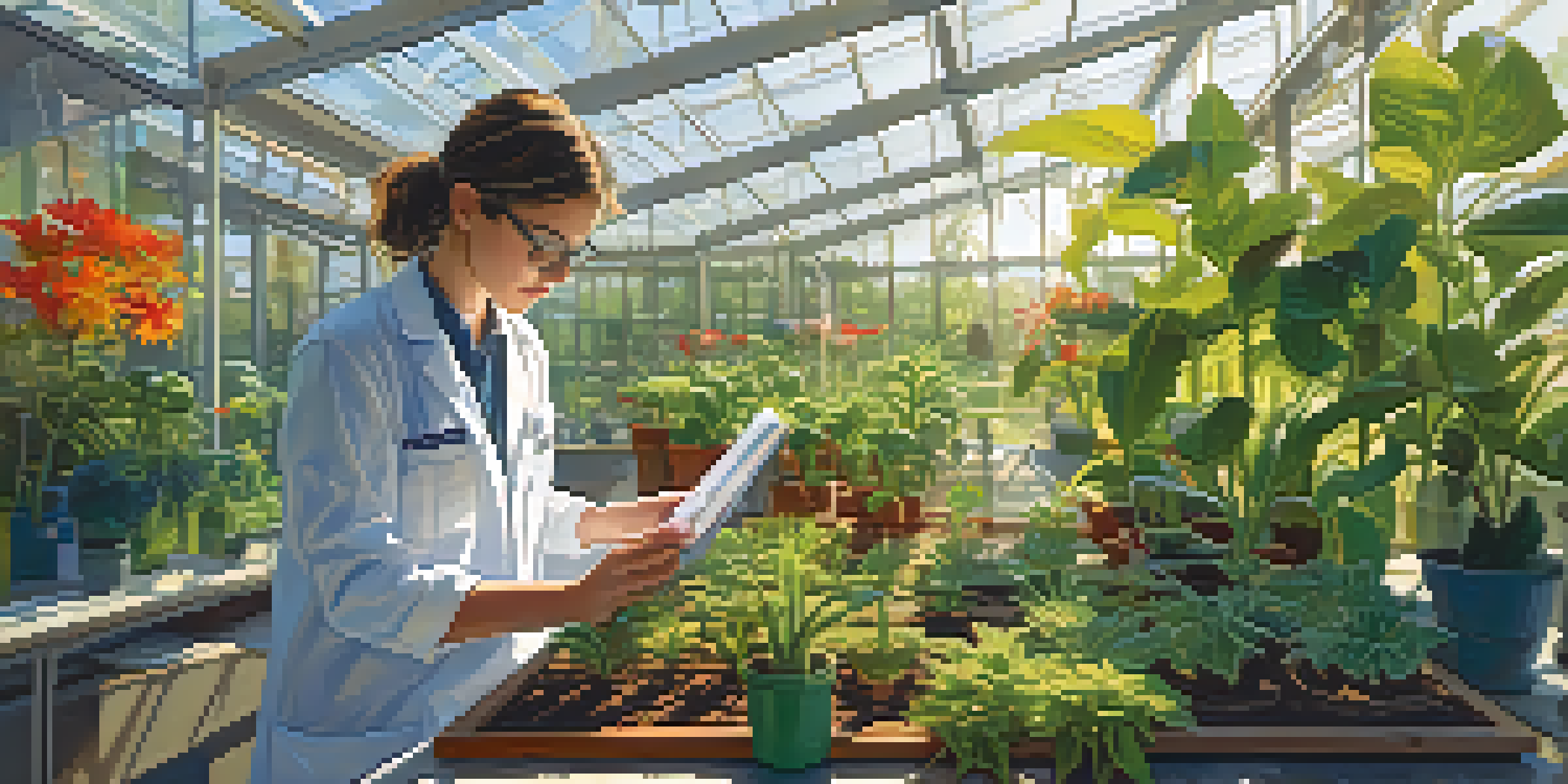Developing a Plant Science Curriculum for Higher Education

Understanding the Importance of Plant Science Education
Plant science is crucial for addressing global challenges like food security and climate change. By developing a robust curriculum, institutions can prepare students to tackle these issues head-on. This field not only emphasizes the importance of plants in ecosystems but also highlights their role in sustainable agriculture and biotechnology.
Education is the most powerful weapon which you can use to change the world.
Incorporating plant science into higher education fosters a deeper appreciation for biodiversity and environmental stewardship. Students gain insights into how plants interact with their environment, which is essential for conservation efforts. Ultimately, a well-rounded understanding of plant science can inspire future leaders in agriculture and environmental policy.
Moreover, plant science education equips students with practical skills that are highly sought after in various sectors, including horticulture, botany, and pharmaceuticals. As they learn about plant genetics, physiology, and ecology, they develop problem-solving skills that are invaluable in their careers.
Defining Learning Objectives for the Curriculum
Setting clear learning objectives is the cornerstone of an effective curriculum. These objectives should align with the broader goals of the program and ensure that students acquire essential knowledge and skills. For instance, objectives might include understanding plant biology, mastering laboratory techniques, or applying ecological principles.

By defining these learning objectives, educators provide students with a roadmap for success. Each objective serves as a benchmark that guides instructional strategies and assessments. When students know what is expected of them, they can focus their efforts more effectively, leading to a more enriching educational experience.
Importance of Plant Science Education
Plant science education is essential for preparing students to address global challenges like food security and climate change.
Additionally, well-defined objectives help in evaluating the curriculum's effectiveness over time. They serve as a basis for assessing whether students are meeting the desired outcomes and where improvements might be needed, ensuring the curriculum remains relevant and impactful.
Incorporating Hands-On Learning Experiences
Hands-on learning is vital in plant science education, allowing students to apply theoretical knowledge in practical settings. This could involve greenhouse experiments, field studies, or laboratory work where they can observe and manipulate plant growth. Such experiences not only reinforce learning but also spark curiosity and innovation.
The greatest threat to our planet is the belief that someone else will save it.
For example, students might engage in projects that involve cultivating plants under different variables, observing how these changes affect growth. This type of experiential learning fosters critical thinking and encourages students to ask questions and seek answers, much like a scientist would in the field.
Moreover, hands-on experiences help bridge the gap between theory and practice, making the learning process more engaging. When students can see the real-world applications of their studies, they are more likely to retain the information and develop a passion for the subject.
Integrating Technology in Plant Science Curriculum
In today's digital age, integrating technology into the plant science curriculum is essential. Tools like remote sensing, data analysis software, and simulation programs can enhance learning by providing students with cutting-edge resources. These technologies not only make learning more engaging but also reflect the innovations in the field.
For instance, using drone technology to monitor plant health or employing software to analyze genetic data can give students hands-on experience with tools they will encounter in their careers. This exposure prepares them for the workforce and encourages them to stay ahead of industry trends.
Hands-On Learning in Curriculum
Incorporating hands-on learning experiences allows students to apply theoretical knowledge in practical settings, enhancing engagement and retention.
Additionally, integrating online platforms for collaboration and research can broaden students' perspectives. They can engage with experts and peers from around the globe, enriching their educational experience and fostering a sense of global community in plant science.
Emphasizing Interdisciplinary Approaches
Plant science does not exist in a vacuum; it intersects with various disciplines such as biology, chemistry, and environmental science. An interdisciplinary approach in the curriculum can provide students with a holistic understanding of plant systems and their relevance to other fields. This integration encourages students to think critically about the interconnectedness of life.
For example, exploring the chemistry of plant nutrients alongside their biological functions can deepen students' understanding of how plants thrive. Such connections can also inspire innovative solutions to challenges in agriculture and conservation.
Moreover, an interdisciplinary curriculum can foster collaboration among students and faculty from diverse backgrounds. This collaboration can lead to unique research opportunities and empower students to tackle complex issues with a multifaceted perspective.
Creating a Supportive Learning Environment
A supportive learning environment is critical for student success. This involves fostering a culture of inclusivity where all students feel valued and encouraged to participate. Faculty should be approachable, and resources should be readily available to assist students in their educational journey.
Moreover, providing mentorship opportunities can significantly enhance the learning experience. Connecting students with industry professionals or alumni can offer valuable insights and guidance, helping them navigate their academic and career paths.
Need for Curriculum Evolution
Regular assessment and adaptation of the curriculum ensure it remains relevant to the evolving demands of the plant science field.
Additionally, creating spaces for collaboration, such as study groups or lab partnerships, can help students feel more engaged. When students work together, they share knowledge and experiences that enrich their understanding of plant science.
Assessing and Evolving the Curriculum
Regular assessment of the curriculum is essential to ensure it meets the needs of students and the evolving demands of the field. This can involve gathering feedback from students, faculty, and industry stakeholders to identify areas for improvement. By staying attuned to these insights, educators can make informed decisions about curriculum updates.
For instance, incorporating new research findings or emerging technologies can keep the curriculum relevant and engaging. This adaptability not only benefits current students but also prepares future generations for the challenges they will face in plant science.

Furthermore, an evolving curriculum reflects the dynamic nature of plant science itself. As new discoveries are made and societal needs shift, a responsive curriculum can empower students to be innovative leaders in the field.